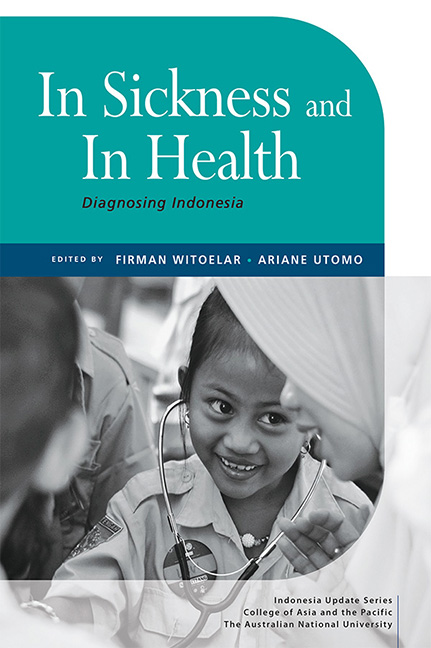11 - Out of the shadows: A brief introduction to mental health in Indonesia
Published online by Cambridge University Press: 09 January 2024
Summary
Mental illness has historically dwelt in the shadows of global health and international development. Only recently has it moved from the margins to become a central priority in both research and policy. Mental disorders account for a significant proportion of the worldwide non‑fatal and overall disease burden, which includes death and disability. By 2030 the annual cost to the global economy is estimated to be as high as US$6 trillion (Ferrari et al. 2022; Marquez and Saxena 2016). Large middle- and low-income countries like Indonesia continue to confront a plethora of challenges in delivering adequate mental health care. This chapter is a brief introduction to how, and how well, Indonesia has met, and is currently meeting, that challenge. Specifically, using two vignettes (which are composite portraits based on actual experience), we clarify the current state of knowledge on mental health needs in association with existing infrastructure, including a preliminary sketch of the current legislative framework. We touch on the impact of the COVID-19 pandemic and conclude with a firm call to action. Without urgent reform, Indonesia’s mental health system will continue to risk failing tens of millions of Indonesians with mental health issues.
Please note, although the following vignettes are not actual cases, they are composites of real people either met directly by the authors or appearing in recent Indonesian media. We caution readers that the following chapter contains confronting themes, and we urge our readership, if you experience any subsequent distress, to contact your local mental health care provider. Some links are provided at the end of this chapter. The other people included in the vignettes, together with their current roles in Indonesian mental health care and the institutions mentioned, are real and can also be contacted for mental health assistance.
Ahmed
Ahmed is 43. He farms a small plot of land in Kebumen, Central Java. He lives in a separate household to his wife and two children, who are currently attending junior secondary school. This separation is a result, he tells us, of ‘his episodes’. They start the same time every year, in July, his birth month.
- Type
- Chapter
- Information
- In Sickness and In HealthDiagnosing Indonesia, pp. 201 - 221Publisher: ISEAS–Yusof Ishak InstitutePrint publication year: 2022

